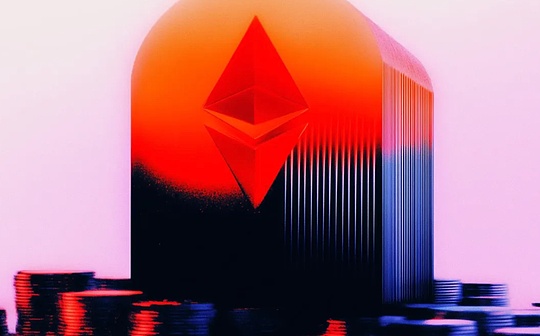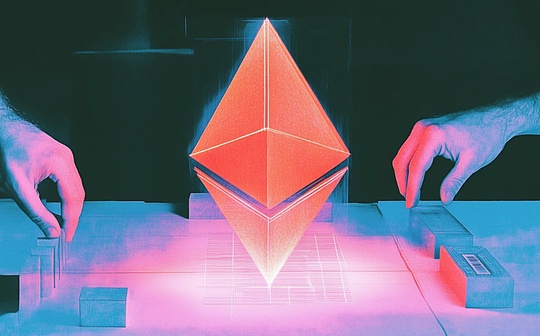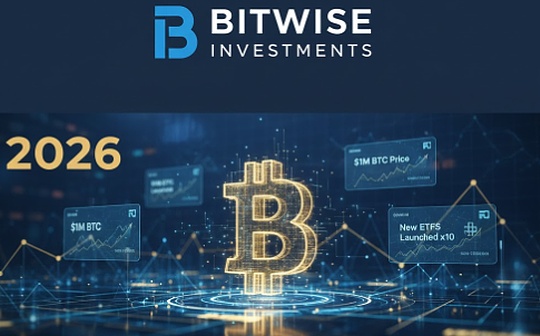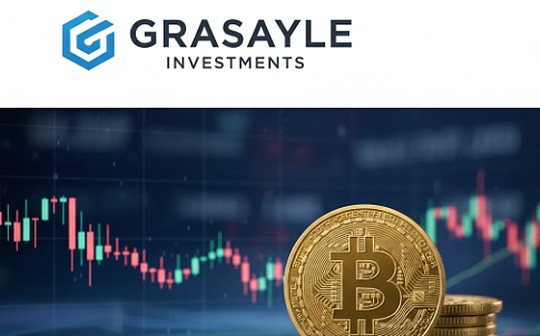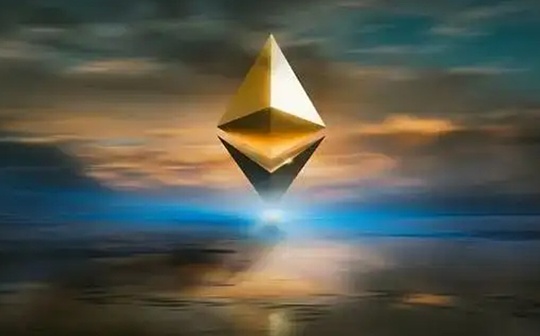
Author: ASXN Source:X, @asxn_r Translation: Shan Oppa, Bitchain Vision
The Ethereum ETF will be launched on July 23.There are many dynamics that are overlooked by the market in ETH ETFs, and there are no such dynamics in BTC ETFs.Let’s take a look at the traffic forecast, ETHE closing and the relative liquidity of ETH:
ETF ETFs have a similar fee structure to BTC ETFs.Most providers will waive fees for a specified period to help accumulate AUM.As is the case with BTC ETF, Grayscale maintains ETHE fees at 2.5%, an order of magnitude higher than other providers.The main difference this time is the launch of the Grayscale Mini ETH ETF, which was previously not approved for use in BTC ETFs.
Mini Trust is a new ETF product launched by Grayscale, with an initially disclosed fee of 0.25%, similar to other ETF providers.Grayscale’s idea is to charge lazy ETHE holders a 2.5% fee while directing more active and cost-sensitive ETHE holders to their new product rather than letting funds be pumped to Blackrock) low-cost products such as ETHA ETF.Grayscale made a comeback after other providers lowered the fees of grayscale by 25 basis points, reducing the fees of mini trusts to just 15 basis points, making it the most competitive product.In addition, they transferred 10% of the ETHE asset management scale to the mini trust and presented the new ETF to ETHE holders.This transition is done on the same basis, meaning it is not a taxable event.
The result is that ETHE outflow will be milder than GBTC, as holders only need to transition to the mini trust.

Now let’s study the process:
There are many estimates for ETF traffic, and we highlight some of them below.Estimates are made and standardized to yield an average estimate of the $1 billion region per month.Standard Chartered gave the highest estimate of $2 billion per month, while JPMorgan Chase’s estimate was lower, at $500 million per month.
Fortunately, we received help from Hong Kong and European ETP and the end of the ETHE discount to help estimate traffic.If we look at the AUM details of Hong Kong ETP, we will come to two conclusions:
1. The relative AUM of BTC and ETH ETP is over-balanced BTC and ETH, with a relative market value of 75:25 and an AUM ratio of 85:15.
2. The ratio of BTC to ETH in these ETPs is quite constant and is consistent with the ratio of BTC to ETH market capitalization.

Looking at Europe, we have a larger sample size for study – 197 cryptocurrency ETP with a cumulative asset management of US$12 billion.After we sorted out the data, we found that the AUM segment of European ETP is roughly consistent with the market capitalization of Bitcoin and Ethereum.Solana is overconfigured relative to its market capitalization, at the expense of “other encrypted ETP” (anything except BTC, ETH or SOL).Solana aside, a model is beginning to emerge—the breakdown of global asset management scale between BTC and ETH roughly reflects the market cap-weighted basket.

Given that GBTC outflows are the origin of the “sell news” narrative, it is important to consider the possibility of ETHE outflows.To simulate potential ETHE outflows and their impact on prices, it is useful to view the percentage of ETH supply in the ETHE tool.
Once the grayscale miniseed capital (10% of ETHE AUM) is adjusted, the existing ETH supply in the ETHE tool has a similar proportion to the total supply when it was released.It is not clear what the ratio of rotation to exit in GBTC outflows is, but if we assume that rotation to exit flows are similar, the effect of ETHE outflow on price is similar to that of GBTC outflows.
Another key message that most people ignore is the premium/discount of ETHE relative to net asset value.ETHE has been trading within 2% of its face value since May 24, while GBTC has traded within 2% of its net asset value for the first time on January 22, just 11 days after GBTC was converted to an ETF.The approval of spot BTC ETFs and its impact on GBTC are slowly being digested by the market, and ETHE’s discounts over NAV trading have been more reflected in the GBTC story.By the time the ETH ETF goes live, ETHE holders will have 2 months to exit ETHE.This is a key variable that will help prevent ETHE outflow, especially exit traffic.

At ASXN, our internal estimate is $800 million to $1.2 B per month.This is calculated by taking the weighted average of the market cap of monthly Bitcoin inflows and scaling by ETH’s market cap.
Our estimates are supported by global encrypted ETP data that suggests that the market cap-weighted basket is the dominant strategy (we may see a rotation of BTC ETFs, adopting a similar strategy).Additionally, given the unique dynamics of ETHE trading by face value before launching and launching the mini trust, we are open to upward surprises.

Our estimates of ETF inflows are proportional to their respective market caps, so the impact on prices should be similar.However, it is also important to measure how much proportion of an asset is liquid and ready to be sold – assuming that the smaller the “circulation volume”, the more the price will react to inflows.There are two special factors that affect the liquidity supply of ETH, namely the supply in native staking and the supply in smart contracts.Therefore, ETH has a liquidity and percentage for sale that is lower than BTC, which makes ETH more sensitive to ETF flow.It is worth noting, however, that the increment of insufficient liquidity between the two assets is not as large as some think (the cumulative +-2% order depth of ETH is 80% of BTC).
Our estimates of liquid supply show that:

When we study ETFs, it is very important to understand the reflexivity of Ethereum.This mechanism is similar to BTC, but Ethereum’s destruction mechanism and the DeFi ecosystem built on it make the feedback loop more efficient.The reflex loop looks like this:
ETH inflows in ETH ETF → ETH price increases → ETH interest increases → DeFi / chain usage increases → DeFi basic indicators improve → EIP-1559 increase in destruction → ETH supply decreases → ETH price increases → More ETH inflows in ETH ETF → ETH interest on →…
One thing that BTC ETFs lack is the lack of “wealth effect” of the ecosystem.In the nascent Bitcoin ecosystem, although there is little interest in ordinals and inscriptions, we have not seen much gain reinvested into projects or protocols at the base level.As a “decentralized application store”, Ethereum has a complete ecosystem that will benefit from the continuous inflow of underlying assets.We believe that this wealth effect has not been paid enough attention, especially in the DeFi field.With 20 million ETH ($63 billion) of TVL in the Ethereum DeFi protocol, ETH DeFi has become more investment-oriented as ETH trading prices rise, and USD-denominated TVL and revenue surge.ETH has reflexivity that does not exist in the Bitcoin ecosystem.

Other factors to consider:
1. What is the rotational flow from the BTC ETF into the ETH ETF?Suppose there is a nonzero part of the BTC ETF allocator who is reluctant to increase their net cryptocurrency exposure but wants to diversify.TradFi investors in particular prefer market cap weighting strategies.
2. How well does TradFi understand ETH as an asset and Ethereum as a smart contract layer?Bitcoin’s “digital gold” narrative is both easy to understand and widely understood.How much can Ethereum’s narrative (the settlement layer of the digital economy, three-point asset theory, tokenization, etc.) be understood?
3. How will the above market conditions affect ETH’s traffic and price trends?
4. The lawsuit in Ivory Tower specifies two crypto assets to connect their worlds—Bitcoin and Ethereum.These assets have crossed the well-known spirit of the times.How did the introduction of spot ETFs change their perspective on ETH considering that TradFi capital allocators are now able to offer products that can charge fees?TradFi’s desire for earnings makes the native earnings of Ethereum through staking a very attractive proposal for providers, and we believe that staking ETH ETFs is an opportunity, not if.Providers can offer 0-fee products, and simply staking ETH on the backend to earn an order of magnitude higher than the normal ETH ETF fee.

